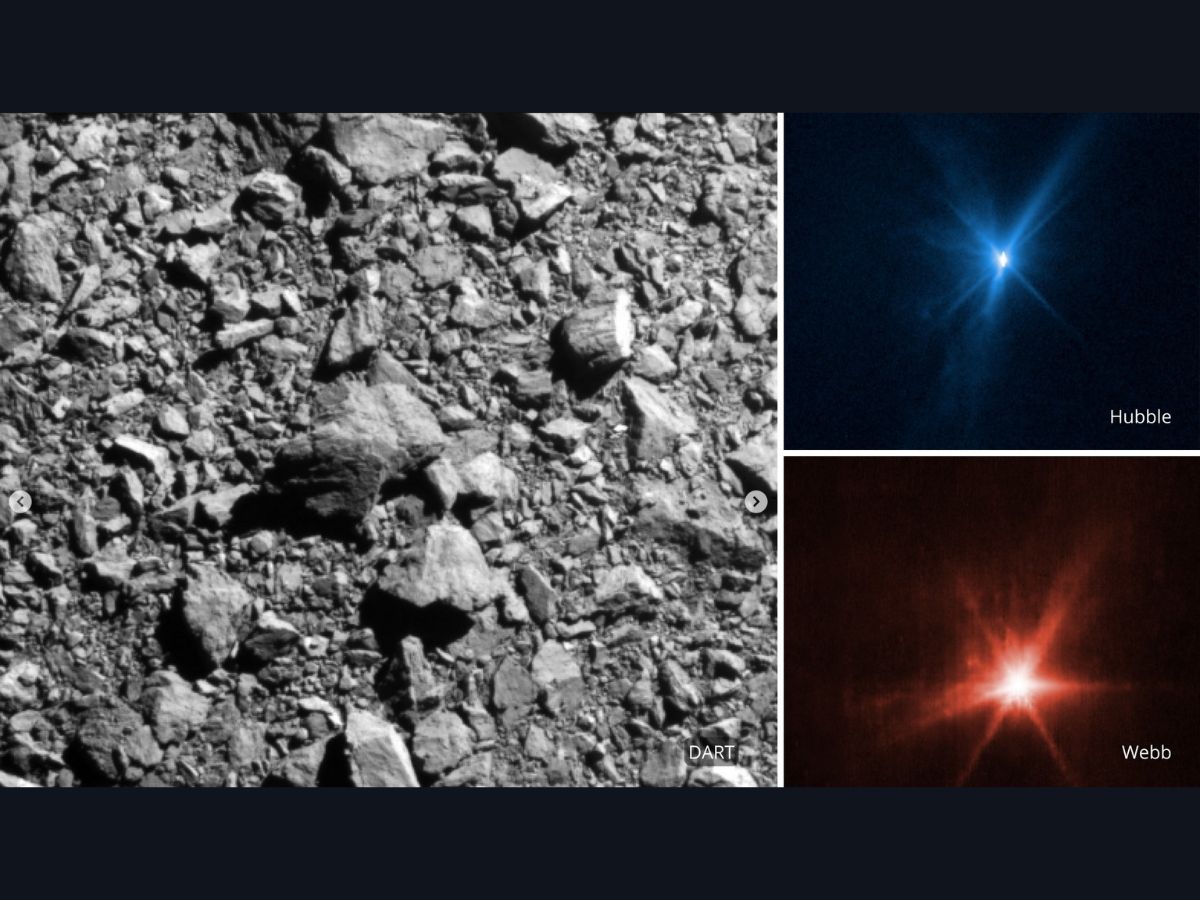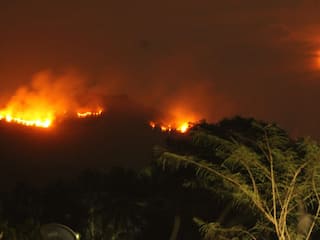Watch: Effects Of DART's Collision With Asteroid, Captured By Webb And Hubble Space Telescopes
Webb and Hubble Space Telescopes have captured the effects of NASA's DART spacecraft colliding with an asteroid, marking the first time both telescopes observed the same target at the same time.

The James Webb Space Telescope and Hubble Space Telescope have once again enchanted the world with their mesmerising images. The two observatories have captured the effects of NASA's Double Asteroid Redirection Test (DART) spacecraft colliding with an asteroid, marking the first time both telescopes observed the same celestial target at the same time.
The DART spacecraft has made history by crashing into an asteroid, marking the successful completion of the world's first planetary defence test. DART successfully collided with asteroid Dimorphos at around 4:44 am IST on September 27. Dimorphos, which is a part of a binary, near-Earth asteroid system called Didymos, posed no threat to Earth. The DART mission is the world's first mission to test technology for defending Earth against potential asteroid or comet hazards.
Webb and Hubble captured DART's impact with the asteroid in different wavelengths of light. While Webb imaged the collision in infrared, Hubble captured the effects of the impact in visible light.
Webb Imaged An Extreme Brightening Following DART’s Impact
Webb, the world's most powerful space telescope, took one observation of the impact location before the collision took place, followed by several observations over the next few hours. Webb's Near-Infrared Camera (NIRCam) instrument captured images of a compact core, with plumes of material appearing as threads streaming away from the centre of where the impact occurred.
Speed, I am speed.
— NASA Webb Telescope (@NASAWebb) September 29, 2022
Observing the #DARTMission impact with Webb was a unique challenge. The target moved over at a speed over 3 times faster than the original speed limit Webb was designed to track! In the weeks leading up to the impact, teams carefully tested for success. pic.twitter.com/XGpTsMg0Ab
The asteroid moved at a speed over three times faster than the original speed light Webb was designed to track, because of which observing DART's impact was a unique challenge for Webb.
According to NASA, scientists intend to observe the asteroid system in the coming months using Webb's Mid-Infrared Instrument (MIRI) and Near-Infrared Spectrograph (NIRSpec), the data from which will provide researchers with insight into the chemical composition of Dimorphos.
The world's most powerful telescope observed the impact over a total of five hours and captured 10 images. NASA has released a timelapse of Webb's images, covering the time spanning just before impact at 4:44 am IST on September 26, through five hours post-impact. In NASA's animation, an area of rapid, extreme brightening is visible.
In Hubble's Images, Ejecta From Impact Appear As Rays
Hubble captured observations of the binary asteroid system ahead of the impact, and then again 15 minutes after DART collided with Dimorphos. Hubble's Wide Field Camera 3 imaged the impact in visible light.
Check out Hubble’s “after” shots from #DARTMission impact!
— Hubble (@NASAHubble) September 29, 2022
Earlier this week, @NASA intentionally crashed a spacecraft into Dimorphos, a non-threatening asteroid moonlet in the double-asteroid system of Didymos, in a test of planetary defense: https://t.co/pe2qeFDYoS pic.twitter.com/VQ5X1pQlEy
In Hubble's images, ejecta from the impact appear as rays stretching out from the body of the asteroid.
According to NASA, the fanned-out spike of the ejecta to the left of the asteroid is in the general direction from which DART approached.

Though some of the rays appear to be curved slightly, astronomers need to take a closer look to determine what they mean. The brightness of the system is estimated to have increased by three times after the impact. Also, the brightness remained steady, even eight hours after impact.
NASA has released a timelapse of images captured by Hubble after DART intentionally crashed Dimorphos. Hubble's animation spans from 22 minutes after impact to 8.2 hours after the collision took place. The brightness of the Didymos-Dimorphos system increased by three times as a result of the impact.
Hubble, which captured 45 images in the time immediately before and following DART's impact with Dimorphos, plans to monitor the asteroid system 10 times over the next three weeks, in order to observe how the ejecta expands and fades over time. This will paint a more complete picture of the cloud's ejection to its disappearance.
What The Webb And Hubble Images Will Teach Us
The advantage of observing DART's impact across a wide array of wavelengths is that it will reveal the distribution of particle sizes in the expanding dust cloud. This will help determine whether the collision threw off lots of big chunks or mostly fine dust.
Scientists will combine this information, along with ground-based telescope observations, to understand how effectively a kinetic impact can modify an asteroid's orbit.
Not only are the coordinated Hubble and Webb observations an operational milestone for each telescope, but also reveal mysteries about the composition and history of the solar system that researchers can explore.

Scientists can obtain knowledge about the nature of the surface of Dimorphos, how much material was ejected by the collision, and how fast it was ejected, using the observations made by Webb and Hubble.
NASA Administrator Bill Nelson said for the first time, Webb and Hubble have simultaneously captured imagery from the same target in the cosmos, according to a statement released by the space agency.
.@NASAWebb & @NASAHubble caught the DART impact on camera – the 1st time that Webb & Hubble were used to simultaneously observe the same celestial target.
— Bill Nelson (@SenBillNelson) September 29, 2022
Looking forward to what we’ll learn about #DARTmission from our telescopes on Earth soon. https://t.co/Y0HOAbSkI0 https:/ pic.twitter.com/lgDwOBd7Om
He also said that an asteroid was impacted by a spacecraft after a seven-million-mile journey and all of humanity eagerly awaited the discoveries to come from Webb, Hubble and other ground-based telescopes, about the DART mission and beyond.







































